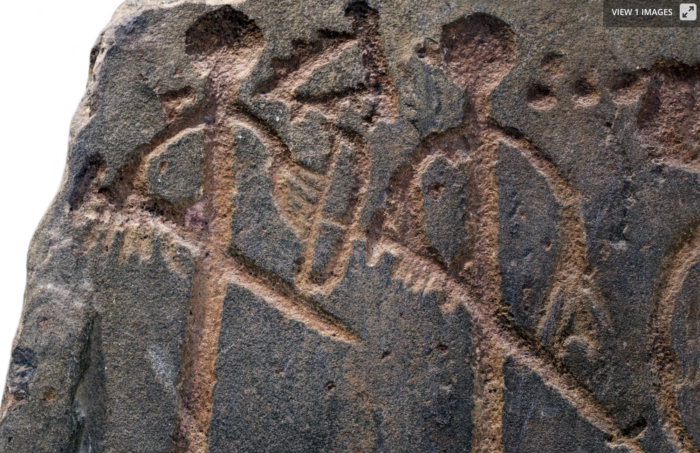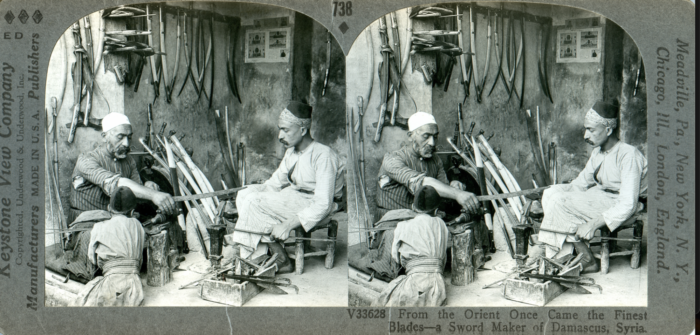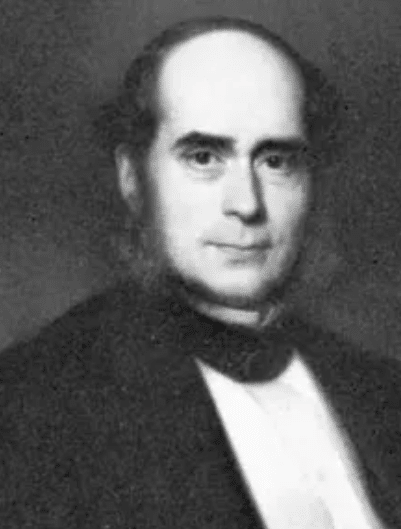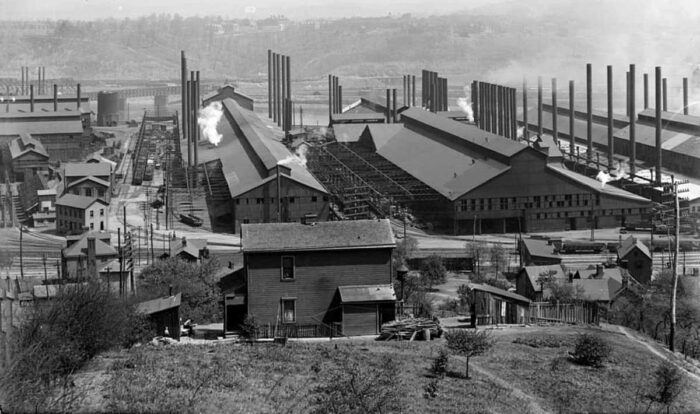History of Steel Through the Ages: From Invention to Innovations
March 13, 2025 | Categorized in: History

The history of steel stretches back thousands of years, evolving from early experiments with iron into one of the most essential materials of modern industry. But when was steel invented, and who were the innovators behind its transformation?
From ancient techniques to the revolutionary advancements of the Industrial Revolution, steel has been shaped by pioneers like Henry Bessemer, the steel process inventor who revolutionized mass production. Its unique combination of strength, versatility, and lightweight properties has cemented steel as a cornerstone of construction and infrastructure. Let’s explore where it all began and how steel has evolved over the centuries.
When was steel invented?

Going back to the beginning, we’ve found evidence of steel artifacts as far back as 1800 BC. Archeologists have recently confirmed that steel tools were used to carve into hard rock (like shown in the photo above) in the Iberian Peninsula much earlier than previously thought.
However, the earliest signs of true steel production are from the 13th century BC in modern-day Turkey. Early steel had a wide range of how much carbon was in the metal, from less than 0.1% (low carbon steel) to 1% (high carbon steel), which could lead to the higher-carbon steel being very brittle. This brittleness can be reduced by tempering the steel, which is a form of heat treating that was used in Egypt as early as 900 BC.
Where was steel discovered?
The discovery of steel span multiple regions. Early forms of steel were independently developed in Anatolia, India, and later in China. In India, Wootz steel became renowned for its superior quality around 300 BCE and was one of their primary exports for thousands of years. Similarly, Chinese innovations led to the creation of high-quality steel tools and weapons during the Han Dynasty. These localized discoveries showcase steel’s universal significance throughout history.
When was steel first made?
The earliest production of steel occurred during the Iron Age when ironworkers accidentally combined carbon and iron to form primitive steel. True production, as we know it today, took a significant leap with the invention of processes like the cementation process in medieval Europe and later, the Bessemer process in the 1850s.
When was carbon steel invented?

The first type of steel created was called blister steel, because the initial process caused carbon monoxide gas to form in the metal, which worked its way to the surface and created “blisters.” While most early steel was considered carbon steel (having no other alloying elements besides iron and carbon), carbon steel wasn’t reliably and consistently produced until 500 AD in Damascus steel (as shown above) and Japanese swords.
Who invented steel?

While no one knows of one person (or even one culture) that invented steel first, the “Father of Steel” is widely considered to be Sir Henry Bessemer. An English engineer in the 1800s, he played a huge role in the beginning of the modern steel industry. He developed the first process for inexpensively manufacturing steel, which eventually led to the invention of the Bessemer converter. A crucial part of the process, these converters allowed impurities to be removed from up to 30 tons of metal at a time, and improved the efficiency of the steel-making process.
When did steel become common?

- Andrew Carnegie’s Homestead Steel Works plant in Pennsylvania (Picture Source: Library of Congress)
Steel’s widespread use began in the 19th century, driven by technological advances like the Bessemer process. This innovation streamlined production, significantly reducing costs and enabling large-scale manufacturing. Figures like Andrew Carnegie capitalized on these developments, transforming steel into a cornerstone for industrial expansion in railroads, bridges, and high-rise skyscrapers. By the early 20th century, America’s steel production exceeded 10 million tons. This meant steel was no longer a luxury material but an essential component in construction and manufacturing across the globe.
How steel has changed

Over the centuries, steel has undergone remarkable transformations, both in its production methods and applications. Modern innovations, such as the use of recycled steel, have revolutionized efficiency and sustainability. According to the Bureau of International Recycling (BIR), around 630 million tonnes of recycled steel are used each year in global steel production, with China in the lead as the world’s largest user of recycled steel in increasing its consumption by 5.4% in the first half of 2024.
Unlike earlier methods that relied on raw materials, today’s steel production frequently employs scrap metal, leveraging processes like electric arc furnaces (EAFs for short) to create high-quality products with minimal environmental impact.
There are also countless different variations of steel now. From mild steel to stainless steel and dozens (or even hundreds) of different grades of everything in between, there is a steel for every job. By adjusting the composition of elements like carbon, nickel, and chromium, manufacturers create steels with tailored properties—whether it’s for strength, corrosion resistance, or flexibility. These advancements have solidified steel’s role as a versatile and indispensable material in the modern world.
Ensure the strength of your projects with carbon steel
The steel industry continues to evolve, which is why we are here to guide you through the ups and downs of the market with our tailored solutions and localized support. If you’re looking for premium structural carbon steel for your project, Service Steel can supply it. We’ve been in the business for almost 60 years and our massive inventory of steel products is ready to ship for a variety of projects. Future-proof your operations today by giving us a call or requesting a quote from our team today!
